Every Friday in case you missed it, ‘The Week That Was” is your recruiting rundown. All you need to know about anything that matters is new in recruiting. We go out to the interwebs and gather interesting and insightful recruiting news we will interest you. This week we got mello, said hi to Bob, went phishing, studied ageism, and found the GOAT of Recruiting firms.
Word of the Week:
Horseshitedness – Trying to cover up your bias by saying a candidate is not a good culture fit.
Tweet of the Week:
"Forget all about “company culture” as a physical location…think about it as a state of mind" – @mattcharney https://t.co/UWJJfeGlHx #hr
— UNLEASH (@UNLEASHgroup) May 3, 2017
 Mello Yello: Yello Survey Becomes Guidebook to Millennial and Gen Z Hungry Recruiters
Mello Yello: Yello Survey Becomes Guidebook to Millennial and Gen Z Hungry Recruiters
With graduation on the horizon, a new crop of talented millennials and their generation Z successors will be entering the workforce. Yet recruiters have some work to do to attract this new generation to their company. Talent recruiting software company Yello, today announced the release of their second annual Yello Recruiting Study. The study shows recruiters a path to attracting this new generation of top talent. Click here to read the entire article.
 What about Bob?: HR and employee benefits platform Hibob raises $17.5M led by U.S.-based Battery Ventures
What about Bob?: HR and employee benefits platform Hibob raises $17.5M led by U.S.-based Battery Ventures
Hibob, an HR and employee benefits platform for small to medium-sized businesses, has raised $17.5 million in Series A funding. Leading the round is U.S. VC firm Battery Ventures, with participation from Arbor Ventures, and Fidelity’s Eight Roads Ventures. Existing backer Bessemer Venture Partners also joined the round, which brings total funding for the U.K. and Israel-based startup to $25 million.
Launched last year, Hibob has built what it describes as a cloud-based HR and benefits platform to help businesses manage and engage with their employees. The software includes all of the day-to-day HR admin tools you’d expect, but also places a lot more emphasis on employee engagement, with a bottom-up approach to the formation and support of employee ‘clubs’ or interest groups. Click here to read the entire article.
 Gone Fishing: Up to 1 Million Gmail Users Affected in Massive Phishing Attack
Gone Fishing: Up to 1 Million Gmail Users Affected in Massive Phishing Attack
A sophisticated scam against Gmail users on Wednesday afternoon may have affected as many as 1 million people, Google suggested in a statement late Wednesday night.
“We realize people are concerned about their Google accounts, and we’re now able to give a fuller explanation after further investigation,” Google said in a statement emailed by its communications team. “We have taken action to protect users against an email spam campaign impersonating Google Docs, which affected fewer than 0.1 percent of Gmail users.”
Google’s characterization is somewhat misleading, however, given the massive scale of its business. Gmail said it had more than 1 billion monthly active users last year. So if “fewer than 0.1 percent” of its users were affected by Wednesday’s phishing scam, that implies somewhere around 1 million users were affected. Click here to read the entire article.
 The 80’s called. They want their Job Posting Back: Amazon posts biased job description.
The 80’s called. They want their Job Posting Back: Amazon posts biased job description.
In March, a software consultant in Seattle received a job posting for a development engineer position at a large local tech company. The email came from an outside recruiter. Most of it was normal, but in the final line, something stood out: Applicants, it read, should have a minimum five years of experience and “less than 20 years of experience.”
The consultant had never seen anything like maximum experience on a posting before. It struck him as overtly ageist. Representatives from the Seattle Office of Civil Rights and the Federal Equal Employment Opportunity Commission agree.
The company with the opening? Amazon. Click here to read the entire article.
 Simply the Best: America’s Best Recruiting Firm’s
Simply the Best: America’s Best Recruiting Firm’s
If you speak with startup founders or large-company CEOs, they’ll probably tell you that hiring good people is their biggest challenge. It’s no wonder there are thousands of recruiting firms in the U.S., all vying to help companies get talent in the door. But which recruiters are the most well-respected?
Forbes worked with analytics firm Statista to compile two lists of America’s best recruiting firms. The first set ranks 250 executive search firms, defined as companies that place executives in positions with at least $100,000 in annual pay. The second ranks 250 professional search firms, which place employees in roles with less than $100,000 in annual income. Click here to read the entire article.
Deans Corner: Send Your Email to SMS
Ever want to send an Email to someone’s Cell Phone? Watch the video below where Dean Dacosta shows us how we can do this with Chrome Extension, Send Your Email to SMS.



 that he not dare say too loudly because it would have made even the likes of Gilbert Gottfried blush with embarrassment? Who didn’t love those guys? Who’s the funniest person you work with today? If you were asked to list the funniest, nicest, cheeriest, person you worked with – could you? Does that person still exist in today’s world of PC, gluten-free office (and life) rhetoric? It seems that even today, every office still has someone that fills this role. It is an Archetype of the Modern Era. The
that he not dare say too loudly because it would have made even the likes of Gilbert Gottfried blush with embarrassment? Who didn’t love those guys? Who’s the funniest person you work with today? If you were asked to list the funniest, nicest, cheeriest, person you worked with – could you? Does that person still exist in today’s world of PC, gluten-free office (and life) rhetoric? It seems that even today, every office still has someone that fills this role. It is an Archetype of the Modern Era. The 

 Derek Zeller draws from over 16 years in the recruiting industry. The last 11 years he has been involved with federal government recruiting specializing within the cleared Intel space under OFCCP compliance. He is currently serves as Technical Recruiting Lead at Comscore.
Derek Zeller draws from over 16 years in the recruiting industry. The last 11 years he has been involved with federal government recruiting specializing within the cleared Intel space under OFCCP compliance. He is currently serves as Technical Recruiting Lead at Comscore. Jeff Newman has been a full life cycle recruiter for over 17 years. He has never limited myself to one industry or one skill set. His staffing philosophy is simple: Interview to hire as opposed to looking for reasons not to hire and to speak with each person instead of simply pushing paper.
Jeff Newman has been a full life cycle recruiter for over 17 years. He has never limited myself to one industry or one skill set. His staffing philosophy is simple: Interview to hire as opposed to looking for reasons not to hire and to speak with each person instead of simply pushing paper.



 I love recruiting. Where else can you have the opportunity to simultaneously love AND hate so many people at the same time? Lately, recruiting as an industry is getting a bad rap. There’s some truth to what people say: In the staffing/free agent world, recruiters can be mercenaries, choosing dollars over building a great candidate experience. In corporate roles, it’s easy to see why recruiters are called lazy, inside the box thinkers. Don’t be offended; I don’t mean YOU. But we have to know that it’s a perception held by many.
I love recruiting. Where else can you have the opportunity to simultaneously love AND hate so many people at the same time? Lately, recruiting as an industry is getting a bad rap. There’s some truth to what people say: In the staffing/free agent world, recruiters can be mercenaries, choosing dollars over building a great candidate experience. In corporate roles, it’s easy to see why recruiters are called lazy, inside the box thinkers. Don’t be offended; I don’t mean YOU. But we have to know that it’s a perception held by many. Thought Leader:
Thought Leader: Ninja:
Ninja: About our Author: Paul Miller has been in recruiting for 20+ years, working in staffing and as a consultant for Monster.com. He is currently the Director of Talent Acquisition for Goodwill of North Georgia.
About our Author: Paul Miller has been in recruiting for 20+ years, working in staffing and as a consultant for Monster.com. He is currently the Director of Talent Acquisition for Goodwill of North Georgia. 
 I want to show you an amazing tool and believe it or not; it is not a
I want to show you an amazing tool and believe it or not; it is not a About our Author: Dean Da Costa is a highly experienced and decorated recruiter, sourcer, and manager with deep skills and experience in HR, project management, training & process improvement.
About our Author: Dean Da Costa is a highly experienced and decorated recruiter, sourcer, and manager with deep skills and experience in HR, project management, training & process improvement.







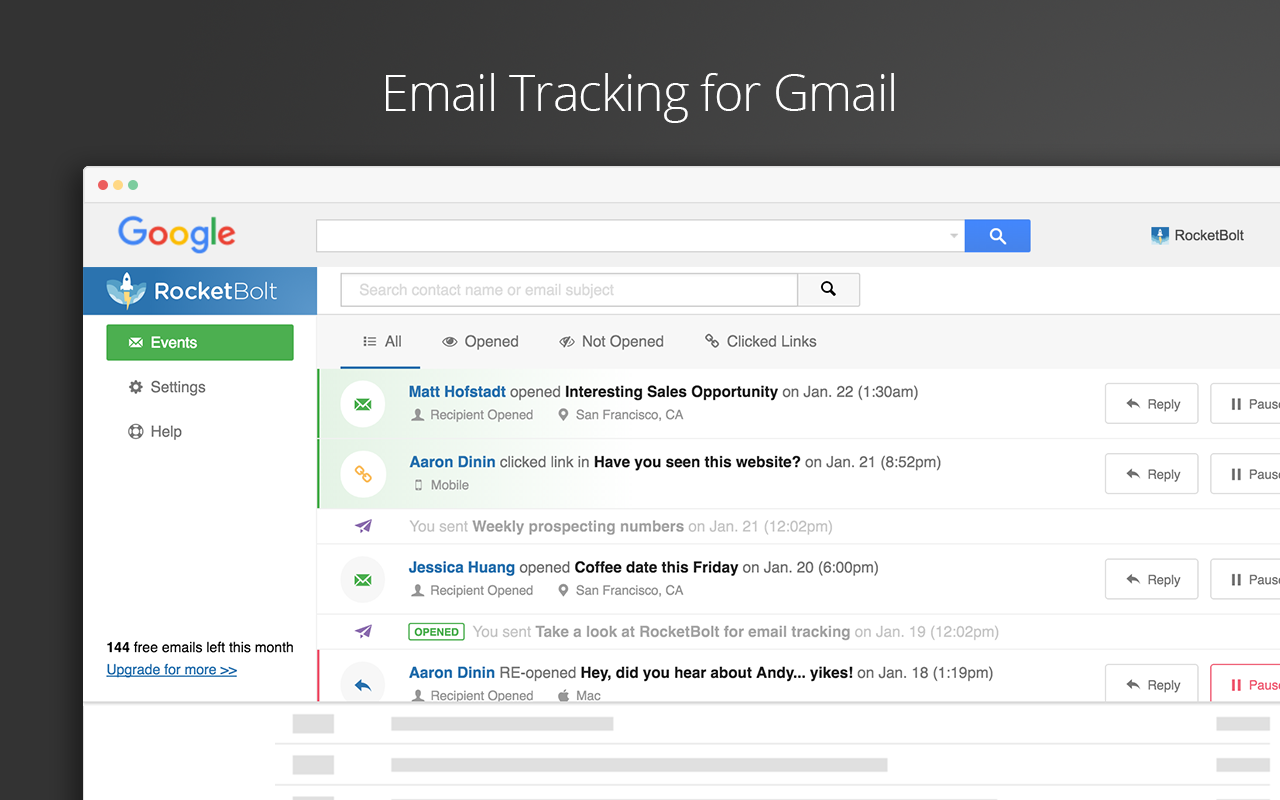
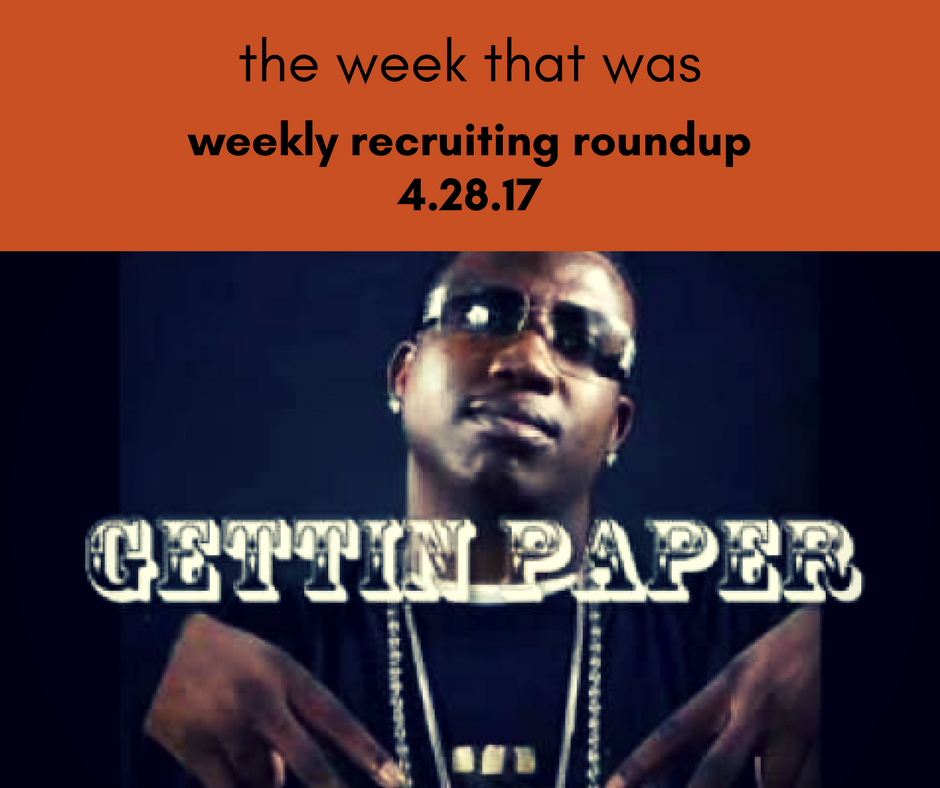
 Srsly, This is Still a Thing: Lessons Learned in Social Media, Recruiting, and Discrimination
Srsly, This is Still a Thing: Lessons Learned in Social Media, Recruiting, and Discrimination Gettin’ Paper:
Gettin’ Paper:  Animal House: 74 Percent of Employers Say They Plan to Hire Recent College Graduates This Year, According to Annual CareerBuilder Survey
Animal House: 74 Percent of Employers Say They Plan to Hire Recent College Graduates This Year, According to Annual CareerBuilder Survey This Girl is On Fire: How to Avoid HR Pro Burnout During Peak Hiring Times
This Girl is On Fire: How to Avoid HR Pro Burnout During Peak Hiring Times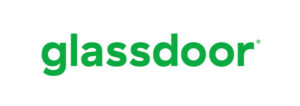





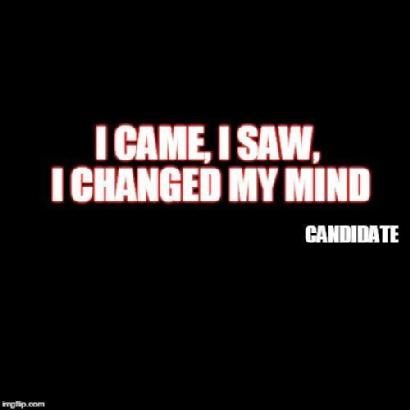
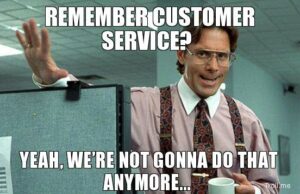 When was the last time you were a candidate instead of a Sourcer or Recruiter? I went through a job search last year, as a candidate, it was evident most recruiters need a lesson in how to provide a
When was the last time you were a candidate instead of a Sourcer or Recruiter? I went through a job search last year, as a candidate, it was evident most recruiters need a lesson in how to provide a  1. Set Expectations
1. Set Expectations 3. Give Better Feedback
3. Give Better Feedback 4. Teach Interviewers How to Interview
4. Teach Interviewers How to Interview

 Needless to say, there are a ton of applicant tracking systems. Figuring out which one is the best fit for your business requires looking at that increasingly broad field of competitors and doing the research required to efficiently narrow down that list to a handful of final contenders and doing demos of those top choices.
Needless to say, there are a ton of applicant tracking systems. Figuring out which one is the best fit for your business requires looking at that increasingly broad field of competitors and doing the research required to efficiently narrow down that list to a handful of final contenders and doing demos of those top choices.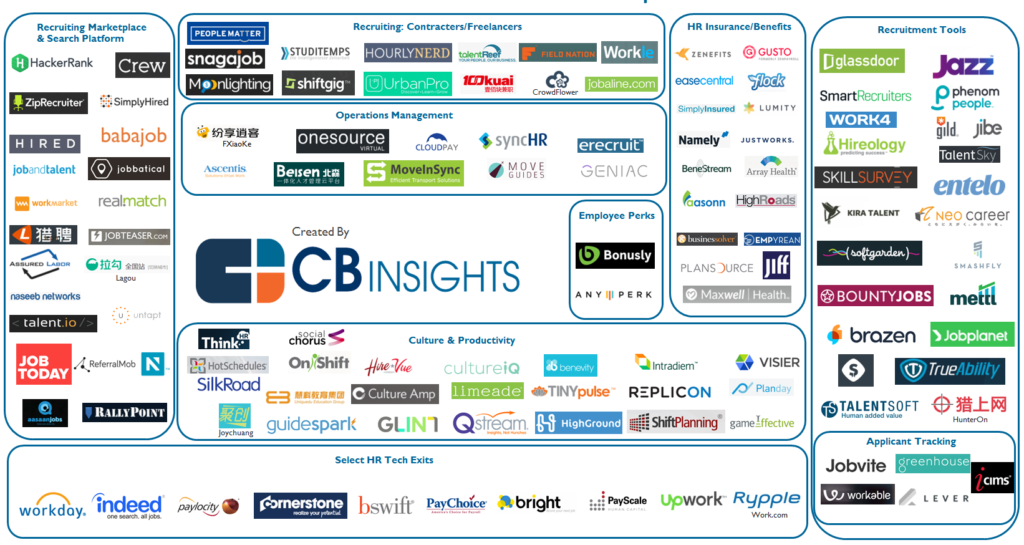
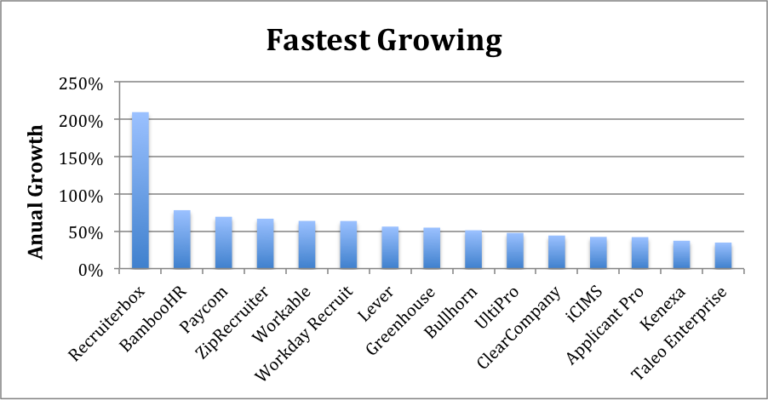
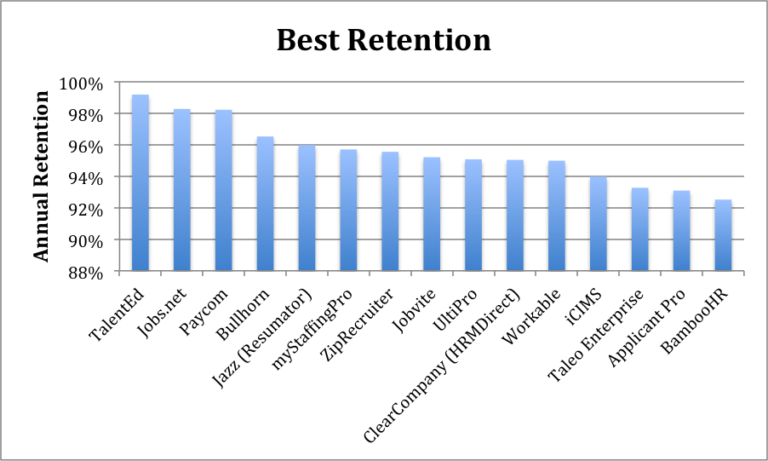
 Phil Strazzulla is the founder/CEO of
Phil Strazzulla is the founder/CEO of 
 A couple dozen times a week (at least) I get some e-mail from some account executive at some PR firm I’ve never heard of representing some client I could give two craps about; most of these are about as personalized as an automated recruiting rejection email or your average InMail, and have about the same utility (which is to say, as a rule, they’re completely worthless).
A couple dozen times a week (at least) I get some e-mail from some account executive at some PR firm I’ve never heard of representing some client I could give two craps about; most of these are about as personalized as an automated recruiting rejection email or your average InMail, and have about the same utility (which is to say, as a rule, they’re completely worthless).
 SaaS companies’ “roadmaps” are often no more than thinly veiled sales ploys designed to close deals while pushing actual product features and functions the client is looking for until after the contract ink is dry.
SaaS companies’ “roadmaps” are often no more than thinly veiled sales ploys designed to close deals while pushing actual product features and functions the client is looking for until after the contract ink is dry.

 This actually can be news, but please – you probably didn’t even read the damn thing, which is why you farm your editing and content out (or delegate it) in the first place.
This actually can be news, but please – you probably didn’t even read the damn thing, which is why you farm your editing and content out (or delegate it) in the first place.
 We don’t often get the opportunity to expose the workers of the future to their future world of work very often, which is why I must admit that the annual
We don’t often get the opportunity to expose the workers of the future to their future world of work very often, which is why I must admit that the annual  That level of implicit trust that I have in my coworkers started even before they became my coworkers.
That level of implicit trust that I have in my coworkers started even before they became my coworkers.
 Let automation take care of the administrative stuff and do the one thing machines will never be able to do at scale – adding the human touch to hiring. It’s what it takes to have the best chance with the best talent.
Let automation take care of the administrative stuff and do the one thing machines will never be able to do at scale – adding the human touch to hiring. It’s what it takes to have the best chance with the best talent. About The Author:
About The Author: 





